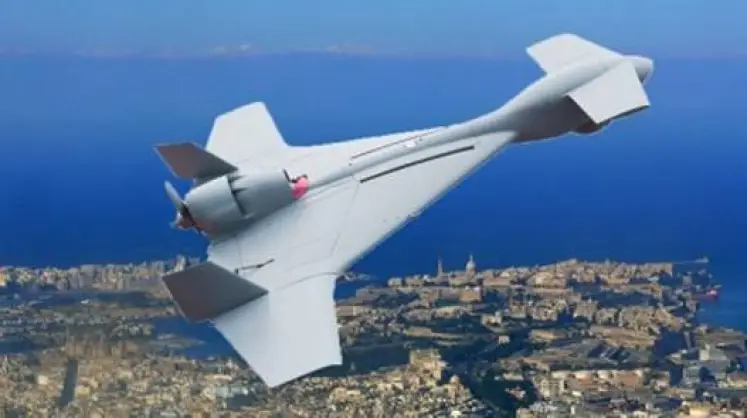
India’s Defence Industrial Mindset needs a Rethink - From Catching Up to Getting Ahead
November 25, 2025

Blog

OEMs Watch as India Deploys New Military Systems (A Real-World Test for New Weapons)
Posted by admin
As India faces off with Pakistan, newly acquired military hardware is undergoing its first real combat test. For Indian and foreign OEMs alike, this conflict is a proving ground where promises meet battlefield performance, and reputations are forged or broken.
As military action escalates along the India-Pakistan border, the spotlight is not just on the soldiers and commanders, but also on the weapons and systems they are using. For Original Equipment Manufacturers (OEMs), both Indian and foreign, this is a moment of reckoning. The systems they have supplied to the Indian Armed Forces are now being tested in real-time operations, and their performance could decide their future in India’s defence procurement pipeline.
Over the past few years, India has been on a strong path of military modernization. This drive includes the induction of advanced platforms across all three services i.e. Army, Navy, and Air Force. India has also made a focused push for indigenisation under the ‘Aatmanirbhar Bharat’ initiative, which aims to reduce dependence on imports and encourage the development of domestic defence capabilities.
Many of the new systems inducted under this initiative, ranging from drones, loitering munitions, and surveillance radars to electronic warfare suites and advanced communication networks are now being used in the ongoing Indo-Pak situation. Imported systems like long-range artillery, anti-drone technologies, precision-guided munitions, and sensor fusion platforms are also part of the equation.
This is, quite literally, the real test. No matter how impressive a weapon system appears during lab trials, demonstrations, or marketing presentations, its actual value is proven only during live operations. Battlefields are chaotic, unpredictable, and unforgiving. The stakes are high, and there’s no room for error. A small failure could lead to a large consequence, while successful performance can be the difference between life and death.
OEMs, whether they are Indian private start-ups, Defence Public Sector Units, or global defence giants will now see their claims put to test. They have all, at one point or another, promised accuracy, endurance, low maintenance, interoperability, and reliability. But such claims are often made in air-conditioned conference rooms or during foreign defence expos. The situation along the Line of Control (LoC) or International Border offers no such comfort. If a drone loses connectivity, or a radar gives inaccurate readings, or if a fire-and-forget missile fails to lock onto its target, the consequences will be immediate and severe.
This phase also offers a chance to assess whether the decision-makers and procurement agencies have made the right choices. After all, billions of rupees are spent through long processes involving trials, evaluation committees, cost negotiations, and finally, acquisition. Now, in this active deployment scenario, everyone from the Ministry of Defence to the last man in the procurement chain will be watching closely. Did the system live up to expectations? Did it integrate smoothly with existing platforms? Did it increase the fighting capability of the force?
At the same time, the performance of Indian-made systems becomes especially important. Under the push for indigenization, several platforms were fast-tracked into service. Some of them are entirely new technologies; others are upgrades or indigenous alternatives to older imports. This deployment, therefore, becomes a credibility check, not just for the Indian defence industry, but also for the policy of self-reliance in defence. A strong performance by Indian systems would strengthen the case for greater domestic production. On the other hand, any visible failure would be quickly picked up, possibly used to justify future imports.
This environment of conflict is also a test for interoperability and systems integration. Many new technologies rely on seamless data sharing between drones, satellites, radars, and ground stations. If these elements do not “talk” to each other in real-time, the whole concept of network-centric warfare breaks down. The Indian forces have invested heavily in such capabilities. Now is the time to see how these systems actually perform in a contested, high-pressure environment.
For OEMs, the outcome of these deployments could impact their future business. A successful system could lead to bulk orders, faster clearances, and export potential. A poor performance, on the other hand, could result in contract cancellations, loss of trust, and reputational damage. This is why many OEMs, especially those that have marketed their systems aggressively will be watching this phase with bated breath.
In conclusion, while soldiers defend the borders, their weapons too are under trial. The current Indo-Pak conflict has turned into an open battlefield not just for strategy and strength, but also for technology and trust. The verdict of the battlefield will speak louder than any marketing brochure.
Col Ashwani sharma (retd), Editor
7 Replies to “OEMs Watch as India Deploys New Military Systems (A Real-World Test for New Weapons)”
Leave a Reply
Search Blog
Categories
Popular Posts







Very well articulated. This article presents a well-structured and insightful analysis of the ongoing military dynamics. It also effectively highlights the critical role of newly acquired defence technologies and the significance of real-time combat testing. The emphasis on indigenization and India’s push for self-reliance in defence adds depth to the discussion. The writing is clear, engaging, and informative, making it a compelling read. The balanced approach in assessing both Indian and foreign OEMs enhances the article’s credibility. Overall, a strong and thought-provoking piece!
Excellent sir
Indeed so rightly brought out the importance of military hardware and the industry which is ever growing at global platform. The outcome based on the efficacy of these war fighting system will also decide the GDP and the growth of the country contributing directly or indirectly in this high level escalation and the ensuing fighting dominated by aerial attack and air defense so far…….
The article brings out very important aspect of National interest in the business of life and death with a caution/ warning to those OEMs who tried to compromise with the GSQR in terms of output of their product or assembling foreign made parts on the name of Make in India/ indigenous product.
Superbly written piece. Yes everything is under test here, including our resolve.
Thank you gentlemen, for your inputs. Yes, the nation’s resolve is under test too.
Couldn’t agree more tiger. Extremely well articulated with sound arguments, observations and candid views.
Congratulations.
A timely and insightful analysis. The deployment of indigenous systems like Akashteer, VSHORADS, and K9 Thunder in Operation Sindoor has showcased their effectiveness in real combat scenarios. It’s encouraging to see how these advancements are enhancing our defense capabilities.